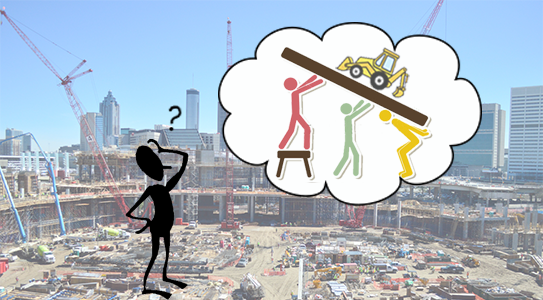Problems Faced By Construction Equipment Manufacturers In India

The currently $3 billion CE industry in India has the potential to grow manifold to become a $21 billion industry in the years to come. While the potential is there, turning the forecast into reality is a different ball game altogether given the problems that the construction equipment manufacturers in India have to deal with. While the potential for growth is tremendous, so are the challenges. A lot of changes are required both inside the CE ecosystem and outside. Here is a brief over view of the current problems hampering the growth of the CE industry.
Basic infrastructure for sustainable growth is missing. These are the basic challenges on the highway to growth.
1. Procedural Clearances: The clearance procedure for the industry involves multiple agencies and the process is painstakingly slow. Due to lack of ground coordination between the involved agencies, basic clearances take up a lot of time and are rather difficult to get. Policy changes are proposed in the matter and are being taken into consideration for implementation to speed up the clearance process at grass root level.
2. Money matters: Financial matters are a web of inter related issues like lack of interest by the private sector, low cost recovery, long working capital cycles, thin central outlay spread etc. CE as an industry is a sizeable investment to start with and while profitable, the profits are slow and come over a long period of time thereby reducing the number of players in the market to a select few with access to big funding.
3. Land acquisition: The laws for land acquisition in India are unfair to the corporates and the acquiring process takes a considerable amount of time. The corporate houses have to take up added responsibility of relocating the concerned people in addition to compensating them appropriately for their lands. The laws and processes for acquiring land for industrial purposes is a task in itself.
4. Governance issues: Lack of coordination between the local, state and central bodies causes major delay in getting the required approvals and documentation processed. The local urban bodies are not empowered enough to authorize such large scale proceedings. Lack of integration in the whole process of setting up a manufacturing plant leads to loss of possible investments and employment opportunities.
Then come in the issues with the ecosystem of the industry itself, which are mentioned in brief below
1. Lack of accreditation norms: The required norms to set the standard and maintain the quality of the products and the operators is missing. There is pressing need for formal training of operators and accredited certification for the same. Quality is another standard that needs to be maintained and improved in terms of the products. A lot of private players have come up with training programs for operators of heavy equipment.
2. Unfavorable laws and taxes: The laws and taxes applicable to the industry are not favorable for growth. The profit margins become smaller and slow, causing investors to lose interest in the industry as a profitable investment.
3. Poor rental penetration: Equipment rental is a profitable space in the CE industry, sadly the concept of equipment rental as a business and service is a relatively new concept and requires a sizeable investment to start with and the profits are yet to keep pace.
4. Demand supply gap: There is a growing demand in the market for construction equipment that have supporting software technologies integrated. While the demand and supply are both there, there is a drastic shortage of skilled labor that can make the most of the available technology.
The present day scene in the CE industry is rather challenging and changing. While the challenges remain, the new government is fast working to create a more favorable atmosphere for the construction equipment manufacturers in India to rise and reach their full potential.









